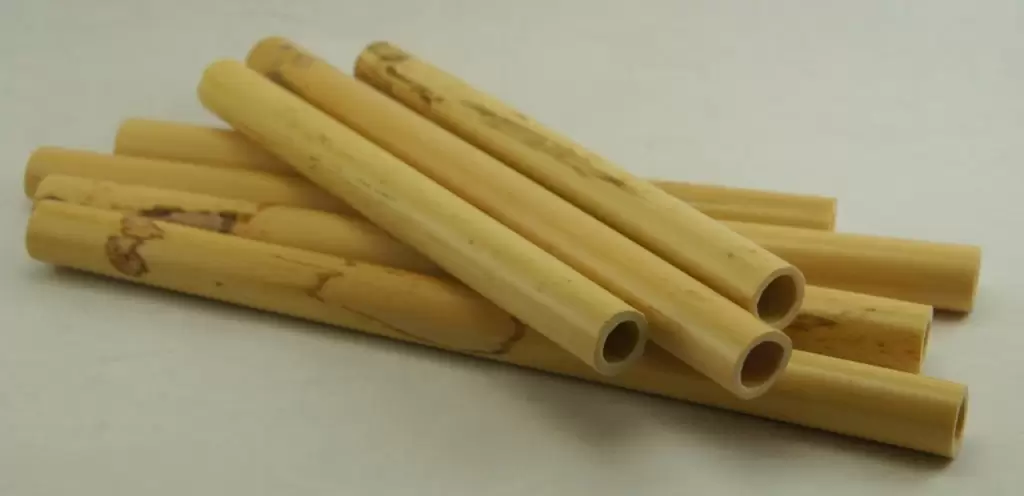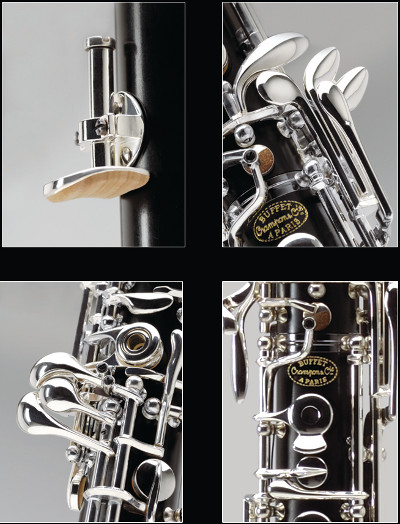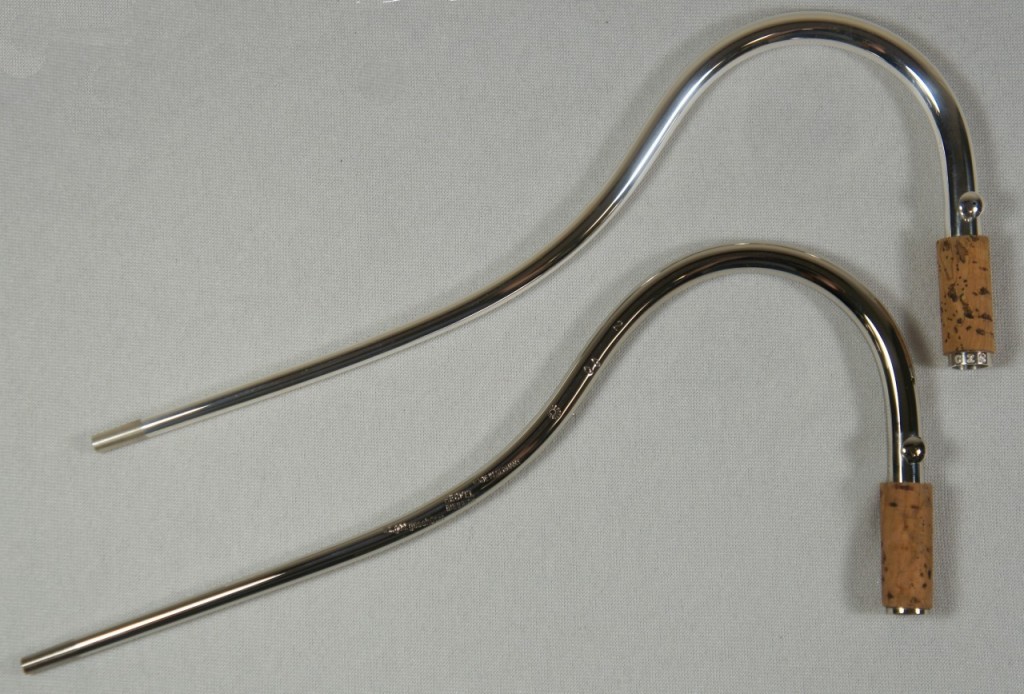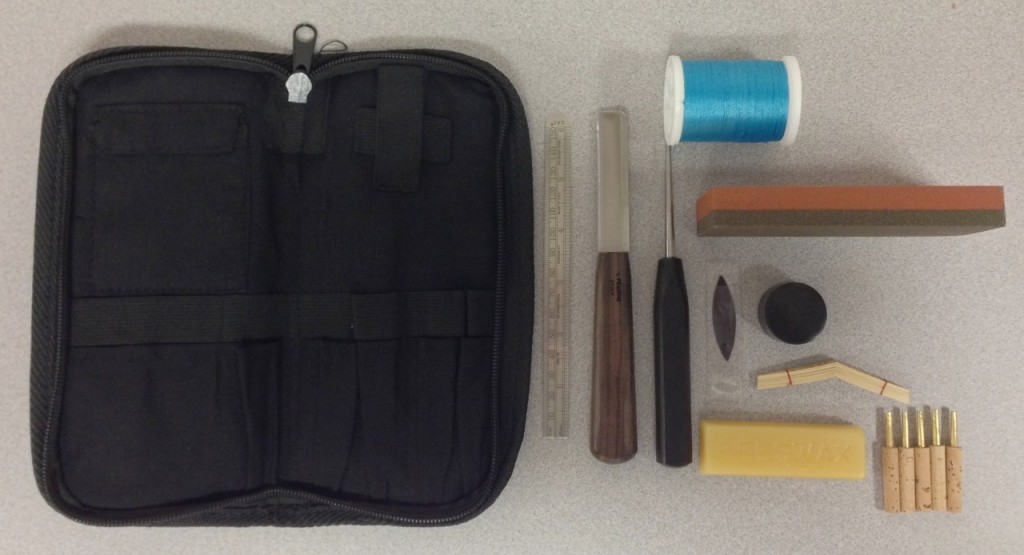
Reed-making is a lifetime process for any oboist out there, and when it comes time to start processing your own cane, it can almost double the workload! Whether you're a professional processing your own cane for yourself and/or students or you're an aspiring oboist learning your way around cane processing, we would like to provide some basic information you may find useful along the way. Remember, there is no 'right' way to process cane and everyone does things differently. These guidelines are just some things to consider and how our oboe specialists here at Midwest Musical Imports do things.
Tube Cane Selection
If you're new to cane processing and it's time to start from tube cane the most common questions out there are, 'How do I sort cane?", 'What's the best cane out there?' and, 'What do I look for when I'm purchasing tube cane?' The bad news is that there isn't a concrete answer to these questions as everyone does things a little differently and looks for different characteristics in their cane. However, there are a few tips that will come in handy no matter how you choose to sort tube cane in the future.
Density
Although the majority of tube cane is grown in the South of France and is the same plant (Arundo donax for you science buffs), every 'brand' of cane is going to be different. The density or 'hardness' of cane will produce different results through every step of the cane processing and reed-making processes. Harder, more dense canes will gouge and finish on the thinner side and the resulting reeds will require more scraping to vibrate, be slightly higher in pitch, and can ultimately last longer. Softer canes, ranging from soft – medium-soft, will require a thicker finishing gouge and the resulting reeds will generally require less scraping (as more cane will come off with each scrape), be slightly flat in pitch, and will have a shorter life-span. Here at MMI we offer a variety of tube cane with varying densities. Each reed-maker will develop his or her own preference for cane along the way but remember, if you have questions about tube cane our oboe specialists are always here to answer questions as well as offer any tips or opinions of their own.
Diameter
Just as with density or 'hardness,' diameter becomes a personal preference with time. If you're just starting out, it's best to take the recommendations fromyour teacher while you're learning. Environmental conditions such as humidity, temperature, and elevation also contribute to your diameter selection. Most tube cane is available in 9.5-10 millimeters, 10-10.5 millimeters, and 10.5-11 millimeter diameters which refers to the diameter of tube. The diameter is important as it will help dictate the opening of the resulting reeds. 9.5-10 millimeter cane will result in reeds that have much larger openings whereas 10.5-11 millimeter cane will result in smaller, more closed openings . There are, of course, other variables that will dictate reed openings (including staples, tie length, shape, etc.), but the foundation of the reed opening will come from the diameter. The most common used diameter is 10-10.5 mm cane, which means you can expect tubes with diameters ranging from 10.0-10.5 mm in the batch. The best way to measure your tube cane is with a radius gauge.
Straightness
When sorting tube cane, straightness is one of the most important factors to take into consideration and is more or less universal among all oboists. When sorting cane you want to seek out the straightest pieces of the batch. Once you split the tubes into their respective pieces, you want to find those that: will lay flat on a hard surface, are not warped or 'twisty', and are not bowed in any direction (either outward or inward.) Using cane that is warped or bowed or not straight in any manner will make gouging, shaping, and ultimately reed-making both frustrating and pointless. Remember, eliminate as many variables in the tube cane processing stages as you can so that when it comes to actually making the reeds you're not putting up roadblocks for yourself.
Cane coloration/grains
Not all oboists are concerned with the coloration or the 'grains' of the tube cane but there are a few things to take note of when you're looking at tube cane. First, the coloration of the cane should for the most part be golden in color, with a 'shiny' surface. Hold the cane up to a light and observe how the light is reflected off the surface. Cane that is dull in finish and green or greyish in color may either be very hard or very soft and could be troublesome to gouge or scrape on. The second thing to take note of are the grains in the cane. The grains of the cane run vertically through the tube and can range from very tightly packed together to very wide. In general, you want to select cane with grains that are straight and more packed together. Tube cane with grains that are very wide apart tend to be very fiberous (can shred very easily during gouging and scraping) and can be very difficult to work with. Remember to avoid those road-blocks early! If the cane looks like it might be difficult to work with, odds are it will be.
When selecting your tube cane for purchase, there is unfortunately no way to determine what the 'best' cane on the market will be. Most oboists will purchase tube cane based on word of mouth and what happens to be the 'hot seller' at any particular time. We suggest asking around or talking to one of our oboe specialists when it comes time to purchase your next batch of tube cane. As a general rule, it is never wise to purchase large quantities of cane you've never personally worked with. Start out with smaller quantities (here are MMI we sell our cane in ¼ lb increments) to test and then if you like what you get you can always call us and order more! Keep in mind that most dealers are constantly receiving shipments of cane and these shipments will have different 'harvest dates.' These batches will vary slightly; the cane you bought and loved 4 months ago may not be the same in a recent batch. Again, start with a smaller quantity until you know what you're working with!
Pre-Gouging Cane
Once you've selected and received your tube cane, the next steps are the foundation of building your reeds. There are several ways and devices you can use to split tube cane. Cane splitters are designed to split the tube cane into three pieces to allow you to sort out the straight and/or useable pieces. These splitters are usually designed to help reduce the risk of injury during this process. Some oboists prefer to use a single razor blade or retractable knife as it allows you to select the exact curve of that particular piece of cane you want to use. While this allows you more control of the pieces, it's also more dangerous. If you're new to cane splitting we highly recommend you work with a teacher or mentor and get their advice. Our oboists at MMI can also offer you advice in this area.
Next you'll want to guillotine and pre-gouge your cane for the gouging machine. Take note that there are a couple ways of doing this next step. Some people will not soak cane until this point, preferring to work with tube cane dry. Some people prefer to work with tube cane after it has been soaked as you will get a more accurate measurement of the diameter when the cane is fully saturated (as cane fibers swell when wet.) Either way, it is recommended that pre-gouging or planing cane should be done when the cane has been soaked. There are, of course, exceptions to this as some gouging machines (like the Innoledy machine) which allow you to gouge completely dry. This is NOT recommended for traditional style machines (such as RDG, Ross, Graf, Driscoll etc) as gouging dry cane is the fastest way to dull the blade of your or anyone's machines!
The guillotine is a machine that cuts the tube to length to be gouged. There are a few different varieties of guillotines on the market, here at MMI we sell the Ross Oboe Guillotine. Pre-gouging is the next step once the cane has been cut to length and the purpose of this is to remove a certain amount of cane and create a flat surface for the gouger blade to cut. There are two standard styles of pre-gouging machines that are generally used. The first is the 'push-through' pre-gouger in which the cane is pushed through a front-facing blade by a pusher. The second is the planing method which the cane is placed in a bed and planed using a hand held wood planer. Both of these methods are common ways to prepare cane and while there also exist pre-gougers with a turn-style crank, push pre-gougers and planers are still the standard.
Gouging Cane
At this point, it's time to gouge the prepared cane. Now, it's good to note that when you're ready to gouge to make absolutely certain your cane is thoroughly soaked. We usually recommend the cane has been in luke-warm water for at least an hour to ensure the fibers are fully saturated. Remember, gouging cane that is even remotely dry will quickly dull the blade of any gouging machine!
Gouging cane is a separate process all in itself and can quickly become the bane of an oboist's existence. There are plenty of gouging machines on the market and the only way to determine what works best for you is try cane gouged on multiple machines. If you're a student, most universities have at least one gouging machine to try. Otherwise we suggest talking to your teacher and getting recommendations as to what gouge to be using. If you're in the market for a gouging machine, it's best to ask around, gather as much information on what is out there, and most importantly TRY CANE! Every machine will yield different results and you should take the time to find what works best for YOU and not what works best for everyone else. Below is a list of standard gouging machines and their makers on the market today.
RDG Woodwinds – Robert Gilbert, Los Angeles, CA
Ross – Dan Ross, Arkansas
Graf – Robert Graf, New Jersey
Opus 1 – Robin Driscoll, Pennsylvania
Innoledy – Tong Cui, New York
The gouging process can become very elaborate and there are many oboists out there who very quickly become obsessed with measuring and adjusting their machines. In general, the most important thing about any gouge is to keep track of the measurements or thickness of the finished piece of cane. Most American oboists will look for a center thickness of .58-.61 millimeters. That is to say that after you gouge a piece of cane the center should be the thickest part and should gradually get thinner as you move outward toward the sides of the cane. The other most important measurement is the sides of the cane just where the ears would be on a shaped piece of cane. The generally accepted measurement for the sides of the cane should be between .45-.48. Keep in mind that these measurements are not concrete by any means and every oboist develops their own preference when gouging cane. While these measurements can vary from person to person, it's important to remember that this will serve as the foundation of the reed. If the gouge measurements are off then the resulting reeds will not work properly and hours of headaches will ensue!
Cane processing is an essential part of any professional or aspiring professional oboists' life. While there are numerous variables involved throughout this process we hope this overview helps shed some light on any questions that might arise. Contact the oboe specialists at MMI for help with any of your oboe and cane needs!






